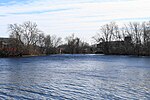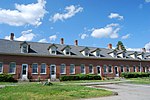Danielson Airport
Airports in Windham County, ConnecticutConnecticut Airport AuthorityTransportation buildings and structures in Windham County, Connecticut

Danielson Airport (ICAO: KLZD, FAA LID: LZD, formerly 5B3) is a state-owned public-use airport located two nautical miles (4 km) northwest of the central business district of Danielson, a borough in the town of Killingly in Windham County, Connecticut, United States. The smallest airport in the state, it is included in the Federal Aviation Administration (FAA) National Plan of Integrated Airport Systems for 2017–2021, in which it is categorized as a local general aviation facility.Although most U.S. airports use the same three-letter location identifier for the FAA and IATA, this airport is assigned LZD by the FAA but has no assignment from the IATA.
Excerpt from the Wikipedia article Danielson Airport (License: CC BY-SA 3.0, Authors, Images).Danielson Airport
Airport Road,
Geographical coordinates (GPS) Address Phone number Website External links Nearby Places Show on map
Geographical coordinates (GPS)
| Latitude | Longitude |
|---|---|
| N 41.819722222222 ° | E -71.901111111111 ° |
Address
Danielson Airport
Airport Road 70
06241
Connecticut, United States
Open on Google Maps








